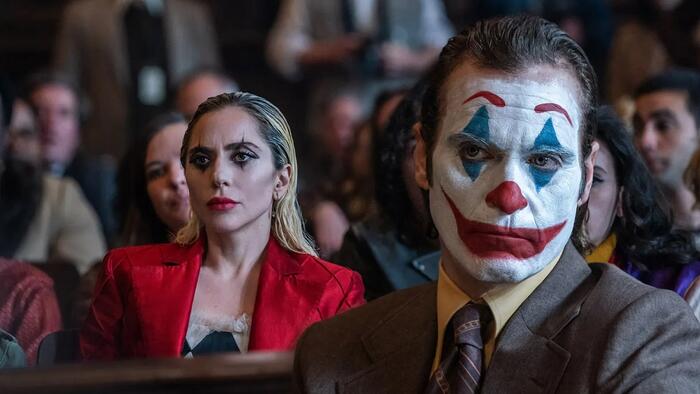In 2019, Warner Bros. achieved unexpected success with Todd Phillips’ “Joker,” featuring Joaquin Phoenix, which grossed over a billion dollars, captivating audiences with a fresh take on the iconic DC villain’s origin. Phillips aimed to deliver a “real movie” cloaked in the superhero genre, a vision that resonated with both critics and fans. However, with the sequel “Joker: Folie à Deux,” expectations were subverted, and the film emerged to polarized reactions. Although it opened to $81 million, which is significant by ordinary standards, this sequel had a considerably higher production and marketing budget of $300 million and suffered a staggering drop in box office receipts during its second week, marking the largest decline for a DC film in the franchise’s history. Whereas the original film collected $247 million in its opening weekend with a much lower budget, “Folie à Deux” seemed to falter under the weight of audience anticipation and contrasting narrative directions.
The narrative of “Joker: Folie à Deux” diverges sharply from its predecessor, depicting Arthur Fleck, now imprisoned in an insane asylum following the chaos of the first film, grappling with his dual identity and an abusive institutional environment. Unlike the raw emergence of his Joker persona in the original, here Arthur struggles against a regimen of medications and the oppressive atmosphere of the asylum. This portrayal arguably diminishes the character’s earlier rebellious spirit, transitioning instead to a narrative steeped in victimhood. The key scenes depicting Arthur’s whimsical musical fantasies, though intending to evoke the Joker’s chaotic essence, unfortunately fall flat, reminiscent of uninspired dream sequences that fail to captivate the viewer’s imagination.
As the plot unfolds, Arthur ultimately fires his attorney and seeks to defend himself during his trial, turning his ire toward the asylum’s dehumanizing conditions. The film drives towards a bleak conclusion, marked by severe implications of violence and humiliation, including scenes of brutality from prison guards. Following the implied assault (a key moment stripped of direct visual representation), Arthur relinquishes his alter ego, symbolizing a complete abandonment of the riotous spirit that characterized his journey in the first film. Instead of rising to become a figure of chaos, Arthur is shunted into a crushing subservience to the system, ending in tragic demise at the hands of a cellmate. In its essence, the film pivots to a narrative suggesting submission to societal systems as the only means of evading catastrophic outcomes—an interpretation that has alienated many of its intended fans.
This disillusionment resonates deeply with a broader context, where many recent Hollywood narratives have been criticized for undermining once-beloved characters, particularly those personified by straight white men. Iconic figures like Luke Skywalker and Indiana Jones have been transformed to reflect contemporary political ideologies, often portraying them as bitter shells of their former selves. This trend extends to familiar franchises where traditional heroism seems replaced with narratives emphasizing failed legacies and diminished agency, criticizing the creative direction taken by writers and directors. Phillips’ portrayal of Arthur in “Folie à Deux” can be viewed as part of this wider narrative arc, where established characters are faced with existential crises rooted in the very systems of power they once challenged.
The debate over the portrayal of disaffected young white men in film marks a significant cultural shift. While earlier periods celebrated characters like Travis Bickle from “Taxi Driver,” the current climate sidesteps manifestations of male anger and disenchantment, branding them dangerous and requiring management. The media has often scrutinized films like “Joker,” accusing them of romanticizing or endorsing violent male rage, particularly in the context of increasing societal dialogues surrounding gender and race. Phillips’ vision of the Joker reflects a sympathetic lens on such struggles, attributing his transformation into a villain to profound societal failures, creating dissonance with the contemporary belief that these narratives should not evoke empathy for certain demographics.
Phillips’ creative leap from the first “Joker” to the sequel embodies not only artistic ambitions but also an attempt to navigate the evolving tides of public reception and ideological stance. The sequel attempts to contradict the glorified chaos underpinning the first film, instead inundating the narrative with themes of suffering, conformity, and the unyielding grasp of institutional power. Through this transition, the sequel evokes a profound commentary on control and agency, suggesting that the constructed societal framework will ultimately subdue rebellion and chaos. This ideological positioning has polarized viewers, further exemplifying Hollywood’s convoluted relationship with its audience and the narratives it chooses to amplify.
The film serves as a contentious reflection of current sociopolitical landscapes, portraying a world where the inherent chaos of human existence is met with systemic overpowering as a means of survival. “Joker: Folie à Deux” may illustrate the notion that attempting to rebel within a structured, corrupt system could lead to obliteration rather than transformation, reinforcing a worldview where conformity might emerge as a potential refuge—or another manifestation of defeat. As discussions continue around the viability of such narratives and the character arc of Arthur Fleck, Phillips’ sequel may very well represent not just a story of loss and despair but also a commentary on the broader struggles facing society today, examining the collision between individual identity and collective narrative.

